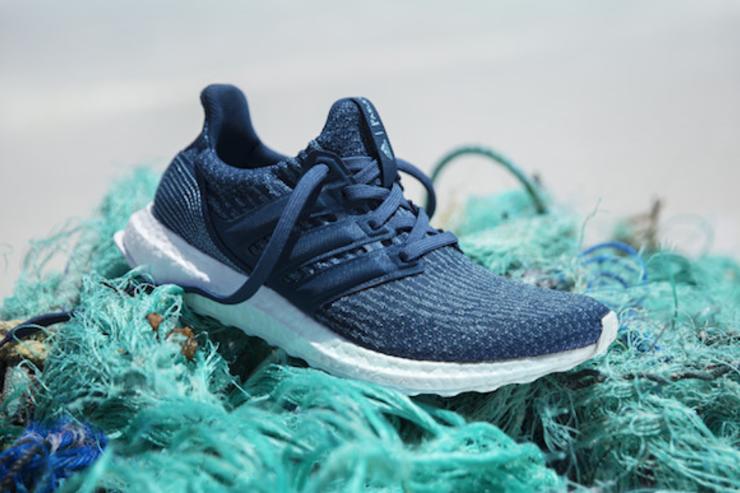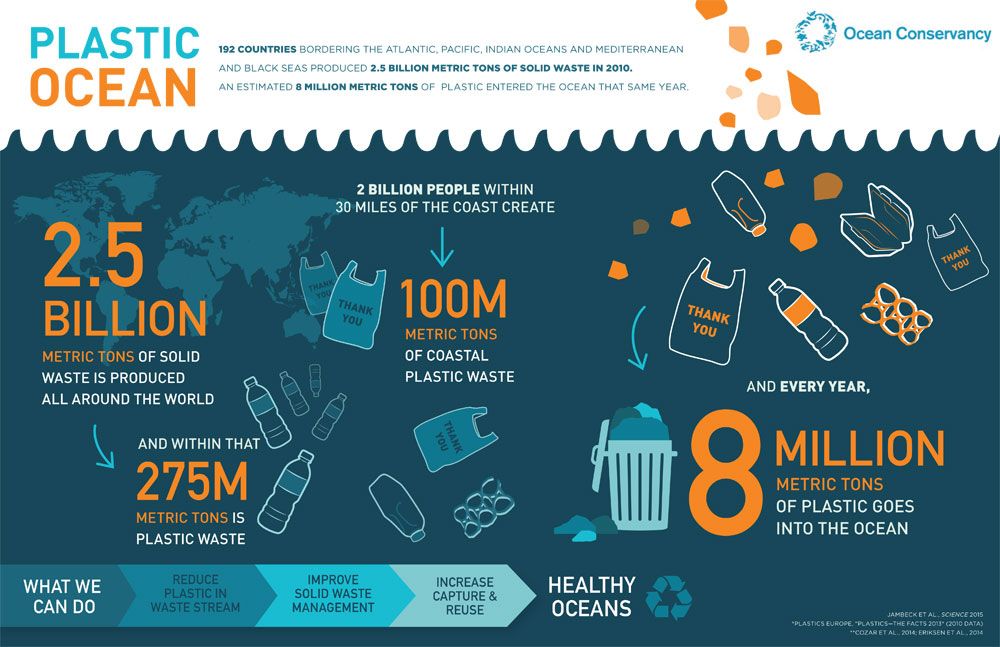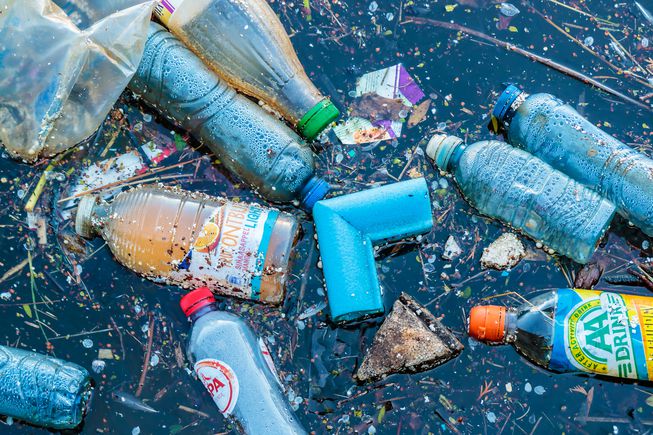|
5/6/2018 Plastic for Fabric (yeah, it's a thing) - Happy World Environment Day and World Oceans Day!Read NowThis year India hosts World Environment Day (WED), which takes place on June 5, 2018. “Beat Plastic Pollution”, the theme for World Environment Day 2018, urges governments, industry, communities, and individuals to come together and explore sustainable alternatives and urgently reduce the production and excessive use of single-use plastic polluting our oceans, damaging marine life and threatening human health. 1896 words; 9 min read Updated 2 October 2018 It’s also World Oceans Week (4-8 June) and the WED theme ties in very much with World Oceans Day, 8 June, who wants us to think about “Preventing plastic pollution and encouraging solutions for a healthy ocean.” Best thing since sliced bread Plastic has been a part of our daily lives because they are so durable. Which is great, but inversely, makes them a persistent force to be reckoned with in our environment, and more importantly our oceans – once discarded. We’ve known for a while that bulk plastics are polluting the oceans. Converging sea currents are accumulating plastic waste in a floating island known as the Great Pacific Garbage Patch, which now covers an area larger than Greenland. The bigger bits of plastic such as nets and water bottles are life-threatening to marine life and sea birds. They can strangle marine mammals or birds and build up in their stomachs and guts. And, if plastic pollution continues at the same rate that we are seeing now, the oceans will contain more plastic than fish by 2050. More recently, awareness of microplastics has raised concern about their ever-present presence in the food chain. Our oceans are under threat Oceans cover 72% of the Earth, supply 70% of the oxygen we breathe, holds 97% of the planet’s water, and lock away 30% of carbon emissions. But it is apparent that our oceans are under threat and we need to move onto action on plastic – now. Plastic makes up 10% of all of the waste we generate so it is only natural that a lot of individuals, organisations, communities and governments are finding ways to repurpose plastics into new materials and incorporate them into the raw material supply chain. Single-use plastic bags and water bottles that are PET (polyethyleneterephthalate) can now be used for so many purposes – turning them into fabric, hardened resin that become car parts, decking, and even furniture. Seeing plastic floating in our oceans and littered on our beaches is not a pretty sight, either. With so much plastic rubbish around us, no wonder there are many clean up initiatives happening around the globe to rid our oceans of them. Plastic for Fabric One of the ways we can support #sustainable #fashion is to encourage the promotion of plastic as a raw material in clothing. Patagonia started making recycled polyester from plastic soda bottles in 1993 – the first outdoor clothing manufacturer to transform trash into fleece. A breakdown of the process is described below:
A bit of trivia here: polyethylene terephthalate ester … shortened version? Polyester. The Changemakers If you are serious about plastic’s impact on the planet and what you can do about it, you can start with supporting the continuous use of beyond its initial intended purpose. Below are some of the #changemakers in this space. Watch out for them and catch up on the latest technology by checking them out! Manufacturers and suppliers of yarn and fabric
One of the ways we can support #sustainable #fashion is to encourage the promotion of plastic as a raw material in clothing. Brands that take pride in their sustainable materials as a raw product
Organisations and communities that are working with the plastic problem and doing good things in general
Events
Take action on plastic In line with the ever-growing theme of reducing plastic pollution, the most important thing you can do to be part of the movement is to avoid single-use plastics at all costs. In Malaysia, I find the use of single-use plastics is just rampant, for example – when you go to the night markets, you will easily accumulate ten small plastic bags that is supposed to carry each of your food items, and those food items are already placed in one-off plastic containers; most of them are not the recyclable type. The easiest thing you can do is carry a backpack or basket for your items, and try bring your own reusable containers for food and drink. People look at me funny when I bring my own plastic containers from home, but I don’t care. I carry my own reusable water bottle and coffee cup everywhere, so it’s just a natural extension. You can say no to plastic straws, spoons and forks. I always have a reusable cutlery set in my bag, and as for the straws – just drink straight from the glass or bottle! People look at me funny when I bring my own plastic containers from home, but I don’t care. I carry my own reusable water bottle and coffee cup everywhere, so it’s just a natural extension. In terms of clothing, if you did find an item that is made from ‘reclaimed polyester yarn’, ask the fashion brand whether the yarn used was from 100% reclaimed plastic or has it been mixed with fresh plastics, too. Try to have a conversation about why and why not – sometimes products are limited by functionality and engineering. Still, challenge them with your desire to make a difference. Brands want to know if they’re doing enough – so don’t be shy on your feedback! But will we ever get rid of plastic trash? One of the things I get asked is whether #PlasticforFabric will take off in a really big way and then we’re left with no plastic waste in the ocean, or on land waiting to be recycled. The honest truth is, it’ll be a while yet until that happens. We haven’t cleaned up our oceans and land environments enough to start with. Therefore, using the circularity model which I have mentioned in my earlier posts, re-purposing plastic as a raw material is one the best ways we can start to close the loop on waste. Yes, we firstly need to design out the waste in all of our supply chain applications, but at the end of the product’s life, once thrown away, there are ways where we can get them back into the top of the chain many times over. Reclaiming plastic is not a new idea, by the way – we’ve been recycling hard and soft plastics such as used water pipes, ink cartridges, plastic film, and shopping bags, for years! – These have been re-born into office stationary, roadside kerbs, benches, food containers, jewellery, lamps, wheelie bins, and so much more! Another thing to remember is plastic is made out of oil, a non-renewable resource. Now that we’ve already extracted that resource we may as well re-use it as much as we can. Can you commit to doing one thing to avoid single-use plastics today? Good luck! And do you know of a brand or enterprise that is doing a lot in the reclaimed plastics space? I’d love to hear from you. Join us in our Slow Fashion movement with the hashtag #ConscientiousFashionista and #wardrobetruths on Instagram, and follow us at @fashinfidelity. Tags: #WED2018 #WorldEnvironmentDay #WorldOceansDay #conscientiousfashionista #fastfashion #slowfashion #ethicalfashion #ecofashion #sustainablefashion #greenfashion #sustainability #wardrobetruths #fashioneducation #fashionisnolongertrendy #fashion #wardrobetruths #saynotofastfashion #kualalumpur #Australia #Malaysia #PlasticforFabric
4 Comments
Have you noticed how plastic containers are often used in the cosmetic field for packaging? Be it a foundation, eyeshadow, lipstick or blusher, most of them come with the plastic container.
Reply
28/4/2023 21:18:02
Thank you for your additional information. this can help me a lot in the future.
Reply
Leave a Reply. |
Details
�
#FashionEducationAdding substance to the Conscious Fashion chatter. Archives
April 2024
Categories
All
Resources
Read more.. |
||||||||||||
Acknowledgement of Country
FASHINFIDELITY acknowledges First Australian peoples as the Traditional Custodians of this country (known as Australia) and their continued connection to land, sea, and culture. FASHINFIDELITY pays their respects to the resilience and strength of Ancestors and Elders past, present, and emerging and extends that respect to all First Australian peoples. FASHINFIDELITY is brought to you from the traditional lands of the Wurundjeri Woi Wurrung and Bunurong peoples of the Kulin Nation.
FASHINFIDELITY acknowledges First Australian peoples as the Traditional Custodians of this country (known as Australia) and their continued connection to land, sea, and culture. FASHINFIDELITY pays their respects to the resilience and strength of Ancestors and Elders past, present, and emerging and extends that respect to all First Australian peoples. FASHINFIDELITY is brought to you from the traditional lands of the Wurundjeri Woi Wurrung and Bunurong peoples of the Kulin Nation.




